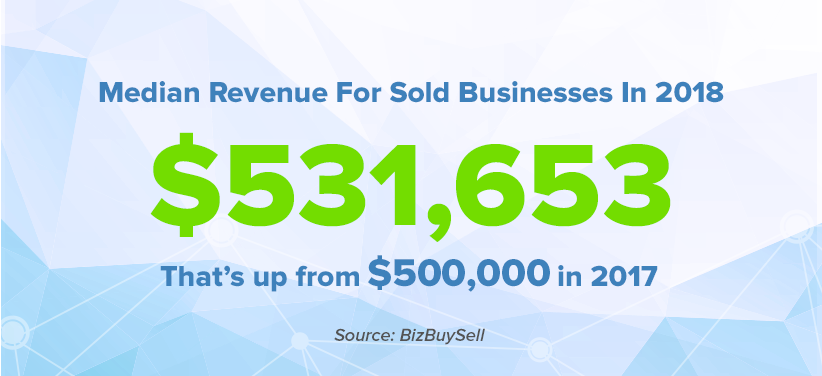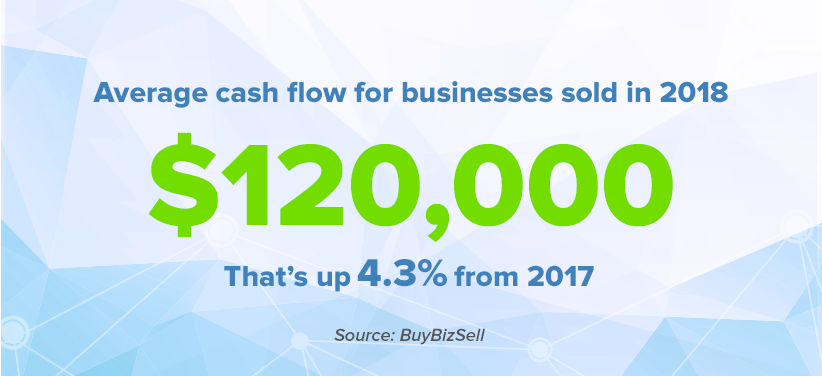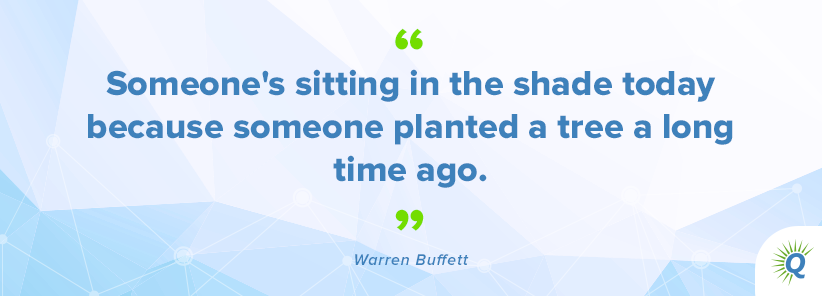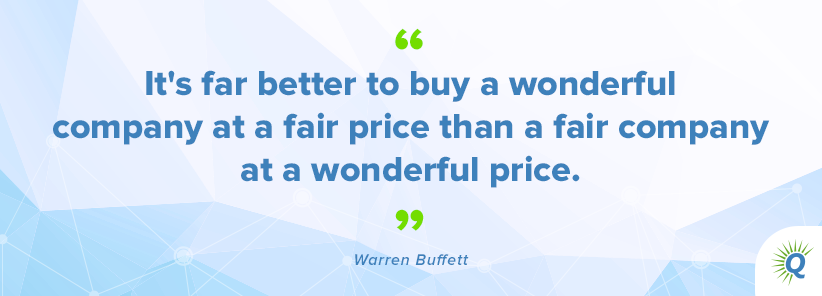Topics:
Never Miss a Beat - Get Updates Direct to Your Inbox
FILTER:


6 Ways to Cause a Stampede of Buyers by Telling the Right Story
By Quiet Light
When you are selling an online business, you want to make sure it is an attractive offering to potential buyers. In this post we will share the story of one sale that perfectly sums up six important things you can do to make create a lot of demand when your business goes on the market.
Make life easier for the buyer
Present the right financial picture
Summary of the 4 pillars of business valuation: how did it stack up?
Of all the problems to have when you’re selling an online business, attracting a stampede of buyers and then having a slew of offers to sort through – those are the good ones.
185 inquiries on the listing in the first four hours.
15 conference calls and 9 offers.
If I’ve said it before, I’ve said it many times…the money is just sitting there waiting for a profitable growing business right now.
Investors aren’t going anywhere anytime soon, and the kind of return an ecommerce business can generate is hard to beat anywhere else.
So how can your business be that business and offer buyers what they’re looking for?
After hearing Mark and Joe discuss the listing behind the frenzy in last week’s podcast, one thing stands out to me: Never underestimate the power of your story.


Listen to the Source of this Post:
This blog post is based on a podcast episode that we recently recorded. Listen to the full episode here:We’ve heard it before, here and here.
RJ Jalichandra of 101 Commerce listed it as one of the top three criteria he uses to screen the abundance of FBA listings that crosses his desk – an intriguing business narrative.
Humans think in story, it’s how we’re wired. And whether you know it or not, when a buyer looks at your business from the outside, they naturally construct a narrative around it.
Here’s an exercise…if I were to make a film about your business today, what would that film be about? What’s the story?
Would it be about some challenge you’ve overcome on the way to success? Or a challenge your brand helps its customers overcome?
Better yet, imagine your business as the lead character in a movie.
Branding folks do this sort of thing all the time.
Who would that character be? How would their story unfold? And what got them to where they are now?


Victoria Labalme, whose work lies at the intersection of business and performance art, talks about the concept of a “throughline” in business and life. She describes the throughline this way:
Stanislavski, the great Russian theatre artist said that every character in a film or a play is driven by a force. It’s the force that moves them through the play. And I like to think of this like you in your life. What is the force that’s moving you through your life? Everything should be contributing to that…all your actions are contributing to that throughline.
Stanislavski’s methods helped produce actors like Marlon Brando. Labalme says that it’s his concept of this guiding force which transforms a brand from commodity into art.
“If you’re in technology, is it really about technology,” she says, “or is it about helping people connect and communicate?”
Likewise, “If you’re in nutrition…is it really about the foods people eat, or is it about helping people be their best so that they can live their dreams?”
The more you connect with that throughline, the more apparent it becomes in your business, the more appealing it’ll be to a buyer.


We’ve heard Mark and Joe say some version of this on the podcast before. Even though we’re in the world of ecommerce – we’re all still people. And people buy from people.
Labalme puts it this way: “It’s never about the transaction, it’s about what is transcendent.”
And what’s transcendent when you’re selling an online business?
For the buyer, things like growth potential, attention to detail, and authenticity.
And for the seller, Mark reminds us, it’s usually more than just the money.
Here’s the short list of 6 characteristics that gave one business exactly the kind of problems you want to have as a seller…like 9 offers and the choice between $50k or $150k above asking price.
The man and his brand
The business in question operates in the category of “America’s fastest growing recreational sport.”
Even though this is an Amazon FBA business where 99% of revenues come from that platform, the founder paid a great deal of attention to branding.
He executed it beautifully with the logo and packaging and ensured continuity across the product listings on Amazon, the website, and the professional-level images used in marketing.
In this case, the brand did what brands must do – bring products to life in the imagination of consumers by activating their emotions.
Meanwhile the owner’s personal brand exuded trustworthiness and a sense of integrity – likewise bringing the company and the possibility of owning it to life in the imagination of potential buyers.
Every buyer, no matter the product, is looking for something they can connect with and relate to in you, the seller.
Can they trust you? Do they want to step into your shoes and take over something you created? In some ways if you’re selling an online business, the first thing you’ll need to sell is yourself.
This owner, for instance:
- Was a stay-at-home dad and former CPA (relatable in juggling work and family plus knowledgeable)
- Devoted just 15 hours a week to running the business (connects to what every lifestyle entrepreneur wants)
- Had already taken enough care to develop and document the processes and procedures (trustworthy and reliable).
Legwork done.
And all that in a business bringing in $455K in discretionary earnings – sort of a buyer’s dream, that is.


Choose an attractive niche
We hear about niche marketing all the time, but what is it really?
Here’s the mashup definition I like best:
It’s the practice of channeling all your branding and marketing efforts towards a well-defined and specific segment of the market while identifying the special attributes of your product/s that will carry the most appeal with that segment.
This owner wisely chose a growing niche to build his company around, but he also drilled down even further and targeted what Joe called a “niche within the niche.”
In this case, the brand was geared towards people who want to try out a sport that’s experiencing a boom in popularity.
They’re curious about the sport (the niche) but are still beginners (the segment within the niche).
As a result, the products weren’t presented in the overly technical way that would tend to appeal to advanced players.
They also sold at a middle-of-the-road price for those who aren’t ready to commit to a large investment.
All the company’s messaging was aimed at that specific segment of the market.
The growing niche plus the solid strategy for appealing to it equaled massive potential…a fact that didn’t go unnoticed by the hundreds of buyers who inquired on the listing in the first 24 hours alone.


Protect against competition
Two major plusses in the listing for this business, which especially would have stood out to experienced Amazon sellers?
- A trademark
- Brand Registry with Amazon
Both indicating a seller who was serious about building the foundation of this business.
And willing to go the distance and differentiate his products from those of the competition.
Advantages of a trademark:
- Helps you communicate a central message.
- Makes it easy for customers to find your products.
- Helps customers search for your company online.
- Increases “goodwill” value when selling an online business.
- Makes it easier to protect from competitors.
Not to mention Amazon requires a trademark before you can enroll in Brand Registry.
Advantages of Brand Registry:
- Gives you access to Enhanced Brand Content
- Protects your product listing from nefarious sellers
- Makes your experience as a seller more efficient
- If you’re selling an online business, all of this translates to enhanced trust and reduced risk for the buyer.


Make life easier for the buyer
By connecting with Joe early on in the process (at least 9 months before he listed his business) this seller learned about what buyers of businesses like his might be looking for and applied that knowledge.
For instance, none of us love a long drawn out process, so he took the time to get SBA approval for the business to speed things up for any non-cash buyers.
When you’re selling an online business, that eligibility expands the pool or possible investors/buyers.
When it came to timing, he put the best interest of the buyer first. How?
This business wasn’t seasonal exactly, but rather than the usual Q4 boost, it tended to do more sales in the Spring and Summer. The seller listed his business ahead of that “rush” to allow the buyer to get in there in time to benefit the most.
In other words, he didn’t put his own interest first in all things. He even insisted on a lower multiple than the one Joe had originally suggested, preferring to streamline negotiations.


What’s the good of doing good in the supposedly-cut-throat world of business?
I refer you back to that idea of the throughline. What drives you? What is your true purpose? Buyers care about that, see that, and respond to it.
Another way that this seller put care and thought into the buyer’s experience was by putting SOPs in place ahead of time.
He’d put care and patience into building a business that someone else could come in and manage and then ultimately grow. He successfully kept his own ego out of it, making the buyers experience that much better.
Present the right financial picture
When it got down to the numbers behind the brand, this business had all the right growth trends for starters.
Keep in mind that savvy buyers aren’t looking at top-line growth over the last 12 months alone but want to see how the business (and its industry) is trending with both revenue and profitability.


When a buyer looked at not just month-over-month but year-over-year trends here it was all good news, showing 90% even 100% growth in some cases. (more on how the revenue by SKU broke down below)
Smart buyers will analyze the percent change in growth from one year to the next to see what’s really going on, asking questions like:
- Are revenues increasing, but at a slower pace than last year?
- And if the percentage growth is flat while revenues are increasing, has your cost of production gone up?
When it came to the financials, another advantage that this seller created for himself?
He hired a bookkeeper who specialized in ecommerce from the outset, even though he was a former CPA and could have handled the books himself easily.
That specialization makes a huge difference in positioning your business to sell. And as a result, his financials were clean and ready for buyers to dig into and get the most information out of.


Show opportunity for growth
Overall this business grew from $0 to over $2MM in less than 3 years. Great news.
But when looking at revenue broken down by SKU, a smart buyer would see good news there as well with this business.
The owner had launched new SKUs in 2018. Some of those were gaining traction at the time the business was listed, and none had been around long enough to impact the last 12 months revenue figures, and therefore the multiple, to their fullest.
What does that mean to a buyer?
It’s like a bonus. It means the road has been pre-paved for revenue growth with no extra efforts on the part of the buyer.
It’s like offering the business at a discount from the value it’ll most likely command at a later date once those SKUs take off. Once again it showed the seller wasn’t looking to extract all the value from the business when he passed it on to someone else.
For buyers, looking for those built-in paths to growth can be critical.
Ultimately this business did attract a buyer experienced with running Amazon businesses with cash in hand, and the deal closed in about 30 days.
While the seller could have chosen a higher offer, he valued a smooth closing and transition process over the extra funds.


Summary of the 4 pillars of business valuation: how did it stack up?
When you’re selling an online business, addressing each one of the four criteria (or pillars) of business valuation will help you maximize value.
In review, let’s see how well this business did in each area:
Risk
Some of the characteristics of this business that helped lower risk for the buyer:
- Efforts made to protect against Amazon competitors like Brand Registry
- Over 2000 reviews in place
- An authentic, genuine seller whose overall motivation wasn’t just the money
- Seller was a former CPA who knew the numbers with clean books
- Potential for brand loyalty already baked in
Growth
Every buyer’s looking for growth, and this business delivered with:
- Outside data on the growing niche industry it served
- All the right growth trends, both month-over-month and year-over-year
- New SKUs just starting to gain traction
- A well-done and on-brand but underutilized website, with 99% of sales through Amazon


Transferability
A business only has value to a buyer if they can run it. This business had buyers covered with:
- Thorough SOPs in place
- Created and run by a former CPA
- Single owner-operator without VAs or employees to transfer
- 15-hour work week
- Outsourced bookkeeping
Documentation
Again, this business delivered:
- Clean books from the start
- Easy to follow SOPs
- Trade mark in place
What was this seller’s throughline? If I had to guess, I’d say high standards, quality, opportunity.
And if this business were a character in a movie? Maybe it wouldn’t be fighting evil, but it would definitely be one of the good guys – putting family first, making an honest profit, and serving customers well.
For anyone selling an online business, the same questions Labalme asks about that motivating force apply: Is it really about making money, or is it about helping the buyer achieve a dream and reach his or her version of success?





